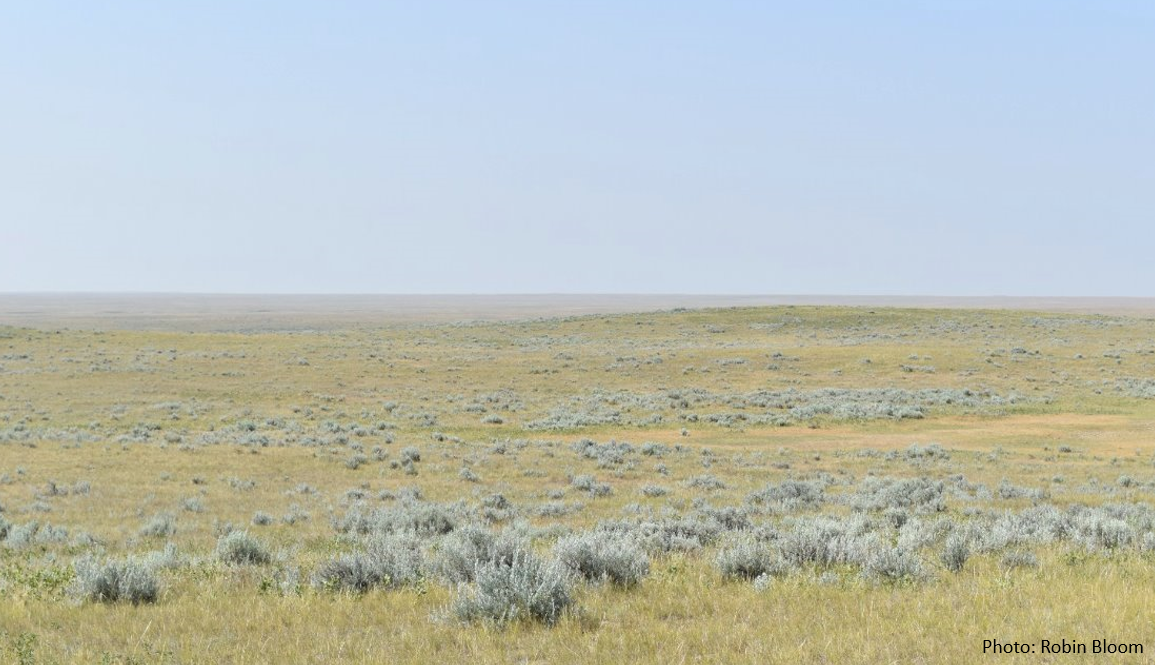Background
Why does there need to be a Grassland Inventory?
Grasslands are vitally important ecosystems. They are also the most fragmented and altered terrestrial ecosystem on the planet. Conversion of grassland reduces its capacity to support biodiversity and further threatens to reduce critical services – carbon storage, nutrient cycling, forage production, water storage and pollination.
Approximately 80 to 85 per cent of Canada’s native grasslands have disappeared. Consequently, project partners recognized a need for an ongoing, comprehensive grassland inventory. While other land-use types are regularly assessed using a consistent methodology, there has been no national inventory methodology applied to Canadian grasslands (native and tame). Further, grassland classification terminology has not been nationally defined, thus limiting effective collaboration across Canada. Management and accounting of ecological services have been hindered as a result.
What was proposed?
This project identified and described all existing grassland inventories in Canada and determined how various inventories could be harmonized to develop a cohesive national grassland inventory. The ultimate aim was to construct a national grassland inventory, including all major grassland types and ecoregions.
This national grassland inventory can be used to update and inform grassland policy, decision-making and risk assessment across Canada going forward. This inventory will also allow the Canadian grassland sector and stakeholders to more accurately assess carbon stores in grassland soils and to predict real or expected loss of grasslands over time.
Who contributed to the grassland inventory?
The project development team was made up of agriculture representatives, non-government organizations and provincial and federal collaborators. As such, the first and last components of this project were to create a collaborative network that could drive grassland inventory and remote-sensing projects in the future.

Developing a Functional Grassland Inventory for Canadian Agriculture
Natural habitat in Canada is facing severe anthropogenic and climate change-driven impacts and we have become accustomed to witnessing grasslands altered due to land conversion, land management practices, invasive species encroachment and severe drought (Gauthier & Wiken, 2003). Factors that degrade grasslands affect habitat for species at risk (SAR), causing concerns for conservation and biodiversity (Brooks et al., 2002; Marques et al., 2020). A major challenge for ecologists and policymakers is to develop a foundation for establishing conservation priorities (Amar et al., 2012; Gauthier & Wiken, 2003; Stephens et al., 2008). Given the current loss of native grassland in Canada and in the Canadian Prairies, restoration and conservation efforts must proceed with a solid understanding of grassland extent and spatial heterogeneity and its susceptibility to climate change impacts (McInnes et al., 2015; Thorpe et al., 2008).
The aim of this initiative was to develop a national grassland inventory that maps the extent of Canada’s native and tame grasslands and tracks the changes within them regularly. This is the foundation for supporting the development of consistent and evidence-based Federal and Provincial grassland policy, risk assessment, decision making, biodiversity and soil carbon accounting.
National Grasslands Inventory Summit
On March 22, 2024, the CFGA hosted an online summit to share the final project deliverables and discuss as a nation what comes next. The full agenda is available here. Video recordings of the four sessions are available below.
The National Grasslands Inventory Summary Report is available upon request. Contact [email protected] to request a copy. For technical support contact [email protected].
Watch this space for next steps.
1. Stakeholder Engagement - John Pattison-Williams
Description: Summarize findings from stakeholder meetings
2. Ground-truthing for Geo-spatial Analysis - Heather Peat-Hamm
Description: summarize what Survey 123 was, how it worked, and the lasting relationships established
3. Remote Sensing for the National Grassland Inventory - Nasem Badreldin
Description: summarize the approach and results of the inventory
4. Grassland Classification - Don Faber-Langendoen
Description: summarize grassland classification approaches across Canada and the biome
What We Heard in 2022
On April 21, 2022, CFGA hosted a webinar to share the feedback that was received through a series of interviews and surveys. The following are recordings and slide decks of the presentations.
Grassland Inventory Project Deliverables
Cedric MacLeod, Executive Director - CFGA/ACPF
Setting Policy and Program Goals for a National Grassland Inventory
Barb Kishchuk, PhD - Science Consultation Services
Technical Challenges and Opportunities for Building a National Grassland Inventory
Nasem Badreldin, PhD - Grassland Analytica
Ground Truthing the Geospatial Data
Data Collection & Training Guide Development
Heather Peat Hamm
Toward a National Grassland Classification System
Introducing the Canadian National Vegetation Classification
Don Faber-Langendoen, Senior Ecologist & Conservation Methods Coordinator - NatureServe
